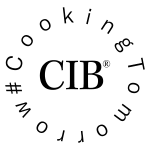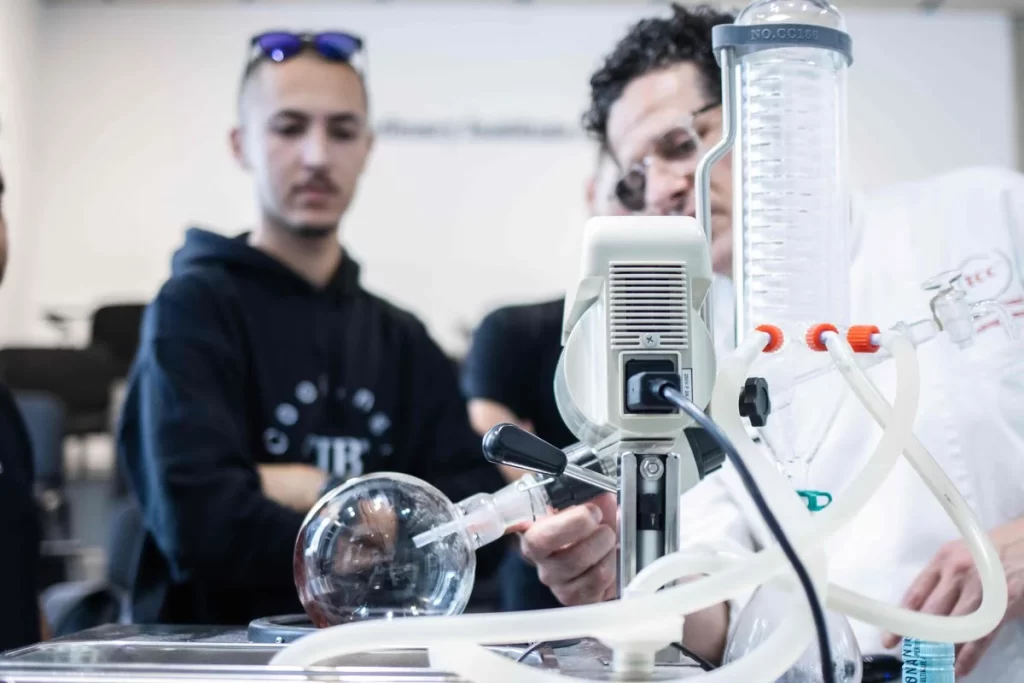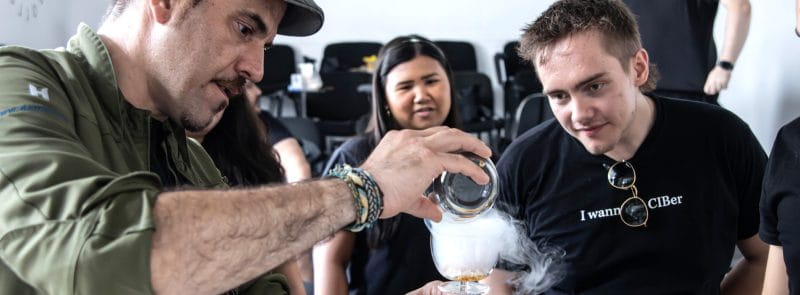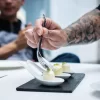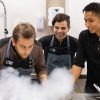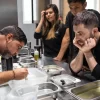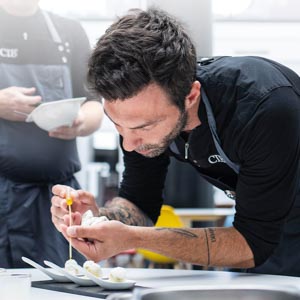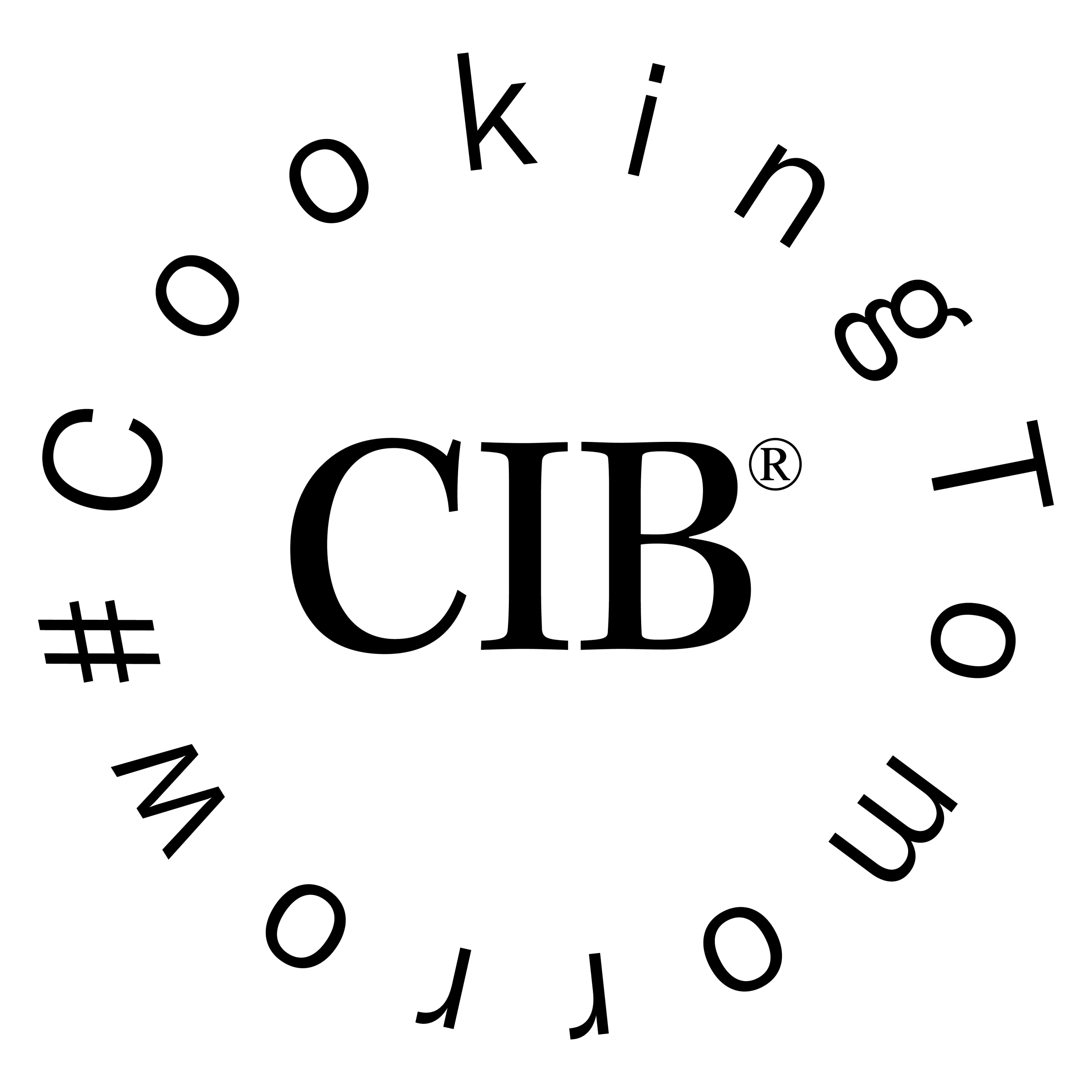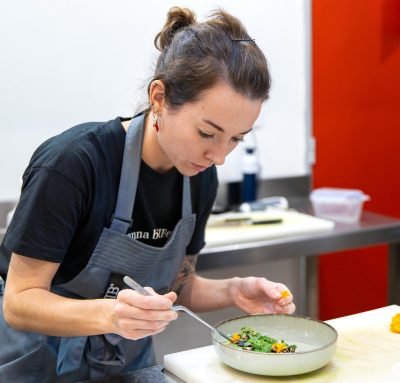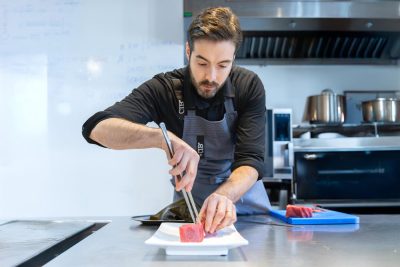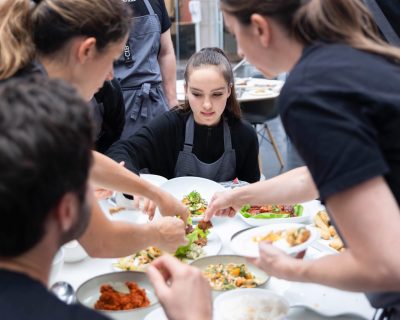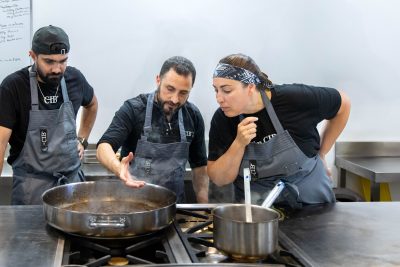When avant-garde gastronomy appeared, it seemed that a frontier was being established between two types of chefs: those who continued to bet on traditional cuisine and those who bet on creativity and technological innovation in the kitchen.
Over time it has been seen that this is not entirely the case, the innovations that have appeared with creative cuisine are increasingly used in traditional kitchens because they streamline processes and preserve food in better conditions. Many machinery and utensils that were once groundbreaking are now integrated into traditional cuisine and the so-called molecular cuisine is increasingly seeking to return to the classic concept of gastronomy. That is why, for the chef of the 21st century, it is essential to know these new techniques and products, and thus be able to boost his career towards better job positions.
Currently, much of what we call molecular cuisine is discreet, not visible to the naked eye. Although it presents elaborations in a novel way, it seeks to enhance and recover traditional flavors. There are many false myths and questions about molecular gastronomy, in this post we will analyze in depth some of these issues.
Science and kitchen
Molecular cuisine was born from the concern of some chefs to have a deeper and more scientific knowledge of what happens in the kitchen. For example, to understand what reactions were behind a browned product, later known as the Maillard reaction, and how they could be controlled.
From this concern, optimal cooking points or ways to achieve many different textures were found. From this knowledge, processes, utensils and machinery were devised to achieve these chemical reactions in an easier, faster and more controlled way.
That is why during the last years of the 20th century and the first years of the 21st century, some avant-garde restaurants, such as “el Bulli”, had scientific advisors to better understand what was happening in their kitchens and the possibility of intervention.
What is molecular cuisine?
It is common for students of the Postgraduate Specialization Program in Advanced Culinary Techniques to start the course by asking what is molecular cuisine? The answer usually begins with the following differentiation:
What is molecular gastronomy and how does it differ from molecular cuisine?
- Molecular gastronomy is the one that is investigated in laboratories or research centers, studying the physical and chemical processes that occur in kitchens and creating techniques to control them.
- Molecular cuisine is the application of scientific knowledge to apply new techniques to your dishes.
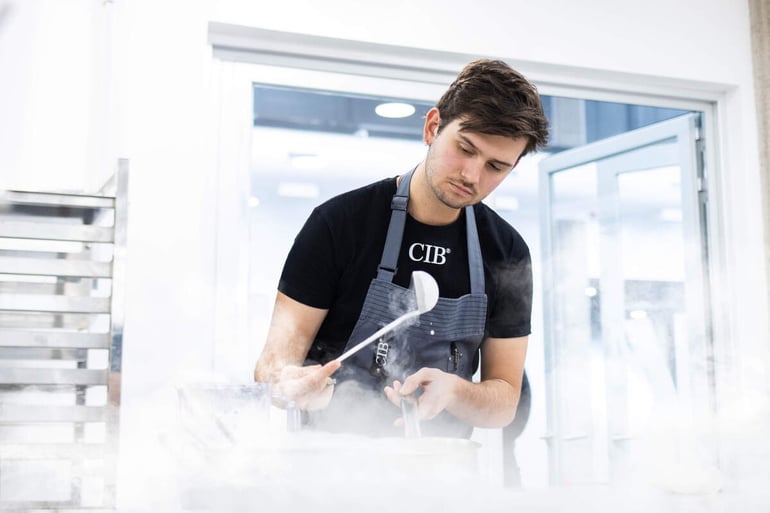
Characteristics of molecular cuisine
One of the distinctive traits of molecular cuisine is its focus on precision and experimentation. Chefs who practice this technique seek to understand how the chemical components of food interact with each other and how these reactions can influence the sensory experience of the diner. Common ingredients are converted into new shapes, textures and unexpected presentations, challenging traditional expectations of food. This culinary creativity has led to the creation of surprising and visual dishes that stimulate both the palate and the eye.
Another highlight of molecular cuisine is its ability to spark interest in food science and foster innovation in the culinary industry. Through experimentation with scientific techniques and procedures, chefs can discover new ways to present and enhance flavors, creating dishes that explore new taste and textural dimensions. In addition, this discipline has contributed to the emergence of new approaches to cooking, such as the use of local and sustainable ingredients. It has inspired a new generation of chefs to explore the science behind the food to take gastronomy to unexplored levels.
History of molecular cuisine
The origin of avant-garde cuisine could be dated back to the 19th century, when scientific knowledge began to be applied to gastronomy. The study of preservatives and heat treatments were useful because they improved the shelf life of food, the time that a food could last with all its organoleptic and nutritional qualities. But it was in a BBC television program broadcast from 1969 that the scientist Nicholas Kurti of Oxford University and the cooking professor Elizabeth Cawdry Thomas began to speak publicly about the union between cooking and science. Nicholas Kurti, who ended up being one of the greatest standard-bearers of molecular cuisine, wondered why:
“While we measure the temperature in the atmosphere of Venus, we ignore the temperature inside our soufflés.”
Together with Harold McGee, a writer specializing in gastronomy, and Hervé This, a physicist and chemist from the French National Institute for Agronomic Research, he participated in the first International Workshop on Molecular Gastronomy and Physics in Erice, Sicily. An event that was held every year until 2004. From these conferences and the thinking of these precursors of molecular cuisine, molecular gastronomy gained prominence and influenced many restaurants. Molecular cuisine had been democratized.
Among these restaurants that began to apply science in the kitchen there were two that stood out in particular; el Bulli of Ferran Adrià, which made a clear commitment to molecular cuisine from 1990 and The Fat Duck of Heston Blumenthal, which opened its doors in 1995.
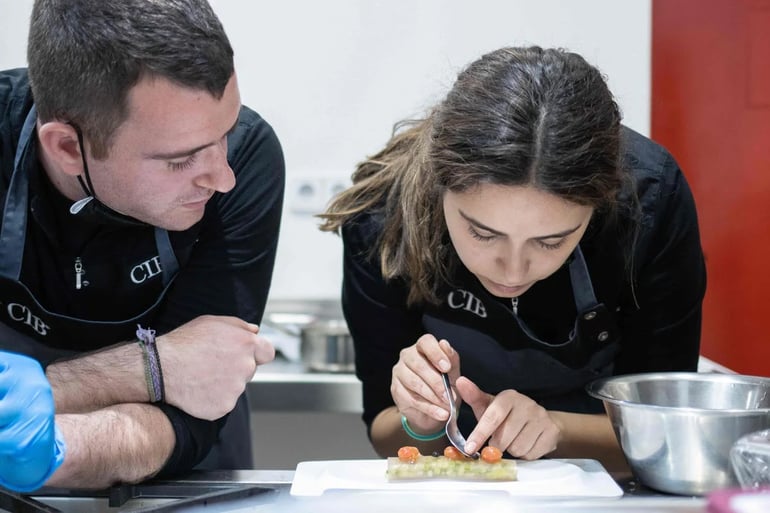
Studying molecular gastronomy and molecular cuisine
Molecular gastronomy and cuisine is usually studied in gastronomy schools as part of a broad curriculum. It is usually studied as part of those avant-garde techniques necessary to build current and creative gastronomic proposals. This means that if you are a chef and want to learn new techniques and delve into molecular cuisine, you may have problems finding the right training, as you will find generalist or monographic courses of short duration.
Studying molecular cuisine involves learning about the physics and chemistry of food, about the most important reactions that occur in the act of cooking and their control. You will also have to know how to work the key techniques of molecular cuisine, as well as the machinery, utensils and products involved in it. Finally and most essential, one must know how to organize this knowledge and skills in a creative and scientifically rigorous manner.
In this way, molecular cuisine can be very useful to improve the customer experience and the culinary proposal of your restaurant.
Molecular cooking techniques and types of molecular food
Many of the techniques used in molecular cuisine are born from the need to optimize processes, enhance flavors or improve the preservation of food and its nutrients. Thus, many of these techniques were born to be invisible in the dishes. It has been from the use of creativity in the kitchen that they have been given more prominence, for example, in the use of different textures in cooking.
Knowing these techniques gives you greater capacity to diversify the offer of a gastronomic business. Therefore, it can mean the opportunity to expand and differentiate the culinary offer of a restaurant or get better jobs in restaurants that have the resources, technologies and molecular cooking utensils to produce it. This does not mean that all these techniques are applied in a restaurant, nor that knowing them will necessarily lead you to work in a molecular restaurant.
Having all the machinery is expensive and not within the reach of every restaurant, but knowing how to choose what will be most useful for your type of business is key to improving the quality of the offer and the customer experience. These are some of the most important techniques of molecular cuisine:
- Impregnation: consists of marinating a product in a vacuum bag using an aqueous medium such as juices or liquors, with the intention of impregnating the product with the flavor of the liquid. In this way we manage to modify its color or texture, making it softer and juicier.
- Liophilization: is a technique that removes water from a food without applying high temperature, the water of the product is frozen and by the technique of sublimation this water passes to the gas state without passing through the liquid state. Thus, food is better preserved and hardly loses volume and does not lose nutrients or organoleptic properties such as taste or smell.
- Liquid nitrogen: this is an element used in kitchens to quickly freeze food, since it is in a liquid state at temperatures of between -196ºC and -210ºC (-320.8ºF and -346ºF). When it loses cold, it turns into gas, visually generating a cold smoke. Because of this, it must be kept in highly insulating containers and has a limited shelf life, as it gradually transforms into gas. In catering, it can be used to make sorbets, ice creams and is a cold “cooking” element in preparations such as mousses, foams, purées or jellies.
- Distillation: it is used to separate impurities from a liquid or to separate two liquids with different boiling temperatures from each other. In the kitchen, distillation is done under vacuum, through equipment called rotary evaporator, which allows distillation at temperatures well below their boiling temperature at atmospheric pressure. It is used to obtain transparent waters with various tastes, to concentrate flavors or to obtain alcohols, among other possibilities.
- Gelation: a process usually produced by an additive, such as a gelling agent, in which a liquid acquires a gel-like texture. It is characterized by the creation of a three-dimensional network structure.
- Foams: a preparation widely used at Ferran Adrià’s elBulli, produced with a siphon, consisting of a kind of mousse with a very light texture and intense flavor. Over time, many types of foams with siphon have appeared, both hot and cold, which can use different bases such as gelatin, egg white, starch or fats. There are also different possible densities for these foams, either thick, fluid or liquid, which are valid for different uses such as garnish, cream, sauce, cocktail or dessert.
- Spherification: it is the encapsulation of a liquid inside a gelatinous medium in the form of sphere produced by means of an additive. Its function is to present a product in a different way, but it can also serve to protect or conserve a liquid that we do not want to be dissolved with the rest of the dish.
- Deconstruction: more than a technique, it is a concept, designed by Ferran Adrià, which consists of rethinking an elaboration by deconstructing it into its parts and reconstructing it in a different and surprising way for the diner. This involves both the order of the ingredients and their quantity or the way they are cooked or served.These techniques can be applied to various ingredients to create innovative types of food and dishes.
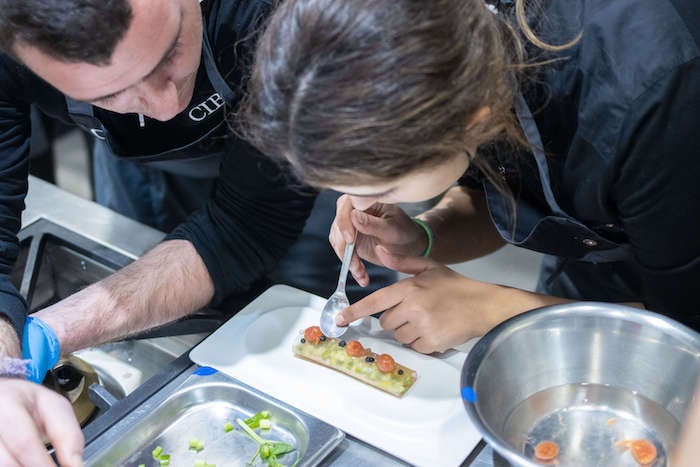
Molecular cuisine ingredients
Many of the ingredients used for molecular cuisine are not strictly understood as ingredients, they are considered additives. The difference between an additive and an ingredient is that the additive does not have the function of nourishing the consumer, but of provoking a reaction. It fulfills a technological and contextual function such as thickening, stabilizing, foaming, emulsifying, preserving or gelling. The most commonly used ingredients and additives in conventional kitchens are texturizers, used to provide textures to foods.
Because of the bad reputation that some additives have, such as those considered food preservatives hazardous to health, an additive is not by definition harmful to health. Some of these additives are of vegetable, mineral or animal origin and the fact that they are catalogued and produced in laboratories means precisely that they are controlled. Their composition is measured and studied, which is why there is legislation that determines their dosage of use.
It is important to bear in mind that these additives are found in very small proportions and normally do not add flavor.
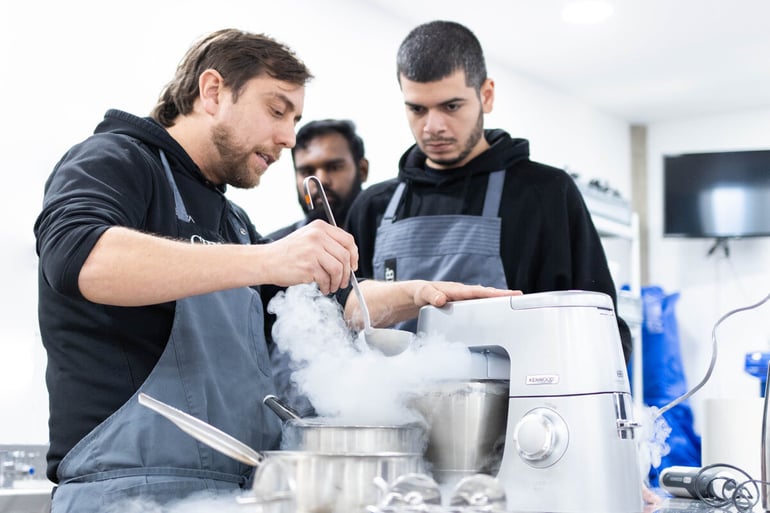
Types of chef from molecular gastronomy
- Chef of haute cuisine and advanced restoration. We often think that someone who is dedicated to molecular cuisine is a chef in a haute cuisine restaurant such as el Bulli where molecular cuisine is a clear protagonist. We have seen that this is not always the case, that molecular cuisine can be useful in most restaurants optimizing processes, but not all molecular cuisine professionals work in a haute cuisine restaurant.
- Chefs in hospitals, caterings, geriatrics or canteens. Molecular cuisine, due to its ability to modify textures and flavors, has become a very useful agent for people with food restrictions or difficulties such as swallowing problems. For chefs in hospitals, caterings, geriatrics or canteens, molecular cuisine can be useful for people with special needs, either because there are foods they cannot eat or because they cannot eat easily.
- Chefs in the food industry. Molecular cuisine chefs in the food industry have both cooking and scientific knowledge and are invaluable in creating products that retain their consistency over time, keep better or are even healthy without losing properties or organoleptic characteristics over time. R&D in the food industry includes the design of new broths, snacks and pastries, but also the development of flavors and ingredients for professional cooking. It is perhaps the least visible face of the sector, but working in the food industry can be better paid than working in a restaurant. It is also a sector in which it is possible to move up the ladder and work for international brands.
At the same time, the food industry is getting closer and closer to haute cuisine chefs, as it seeks to bring these chefs and haute cuisine techniques closer to the general public. These brands offer new product formats based on the new trends in professional cuisine. From Albert Adrià to Nandu Jubany have contributed to design products for the food industry such as potato chips, nougat, croquettes, snacks or beer.
Career opportunities as a molecular cuisine chef
- Chef specialist in molecular cuisine.
- Chef specialist for food behavior.
- Head chef.
- Responsible for innovation projects (R&D).
- Private chef.
- Gastronomic manager in the food and catering industry.
- Director of development of new gastronomic food products.
- Gastronomic consultant.
Competitive advantages for studying the postgraduate course in advanced culinary techniques at the CIB
- Deep understanding of the raw material.
- Gastronomic vision and application to food and pathological problems.
- 360º vision of molecular cuisine, its environment, application, products, technology for any context.
- Ability to create, innovate and meet gastronomic objectives.
Advantages and benefits of molecular cuisine
There are many benefits to molecular cooking and it can have different functions:
- Optimize processes and speed up the time in which a dish is cooked, served or preserved, especially in gastronomic businesses with a high volume of customers.
- Generate creative gastronomic proposals that are often presented in tasting menus that show the great variety of possible textures, concepts and presentations that today’s cuisine has to offer.
- Improve the gastronomic experience for people with dietary restrictions or difficulties in food intake.
- Develop new products and ingredients for the food industry and meet the needs of new consumer habits.
